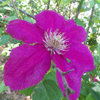fertilizer question
dragonfly_field
9 years ago
Featured Answer
Sort by:Oldest
Comments (17)
dragonfly_field
9 years agoRelated Professionals
Benbrook Landscape Architects & Landscape Designers · McKinney Landscape Contractors · Alpharetta Landscape Contractors · Berkeley Heights Landscape Contractors · Cornelius Landscape Contractors · Danvers Landscape Contractors · Essex Landscape Contractors · Medford Landscape Contractors · Mequon Landscape Contractors · Salem Landscape Contractors · Vashon Landscape Contractors · Washington Landscape Contractors · Weslaco Landscape Contractors · Irvington Landscape Contractors · Kingsburg Landscape Contractorsgardengal48 (PNW Z8/9)
9 years agoken_adrian Adrian MI cold Z5
9 years agoken_adrian Adrian MI cold Z5
9 years agodragonfly_field
9 years agogardengal48 (PNW Z8/9)
9 years agodragonfly_field
9 years agogardengal48 (PNW Z8/9)
9 years agoplaidbird
9 years agoFreda
9 years agogardengal48 (PNW Z8/9)
9 years agoplaidbird
9 years agodragonfly_field
9 years agobuyorsell888
9 years agodragonfly_field
9 years agodragonfly_field
9 years ago
Related Stories

GARDENING GUIDESGet on a Composting Kick (Hello, Free Fertilizer!)
Quit shelling out for pricey substitutes that aren’t even as good. Here’s how to give your soil the best while lightening your trash load
Full Story
SELLING YOUR HOUSE15 Questions to Ask When Interviewing a Real Estate Agent
Here’s what you should find out before selecting an agent to sell your home
Full Story
GARDENING GUIDESNo-Regret Plants: 5 Questions Smart Shoppers Ask
Quit wasting money and time at the garden center. This checklist will ensure that the plants you're eyeing will stick around in your yard
Full Story
GARDENING GUIDESHow to Keep Your Citrus Trees Well Fed and Healthy
Ripe for some citrus fertilizer know-how? This mini guide will help your lemon, orange and grapefruit trees flourish
Full Story
GARDENING GUIDESHow to Switch to an Organic Landscape Plan
Ditch the chemicals for a naturally beautiful lawn and garden, using living fertilizers and other nontoxic treatments
Full Story
GARDENING GUIDESCommon Myths That May Be Hurting Your Garden
Discover the truth about fertilizer, soil, staking and more to keep your plants healthy and happy
Full Story
EARTH DAYThe Case for Losing the Traditional Lawn
Work less, help the environment and foster connections by just saying no to typical turf
Full Story
EDIBLE GARDENSHow to Add an Apple Tree to Your Edible Garden
Readily available, beautiful and fragrant, apple trees offer four-season interest along with crisp, juicy fruit
Full Story
GARDENING GUIDESLush, Foodie Abundance in a Small Urban Garden
This modest backyard garden provides its owner with fruit and vegetables all year round, thanks to an innovative low-maintenance approach
Full Story
LANDSCAPE DESIGNGet Along With Less Lawn — Ideas to Save Water and Effort
Ditch the mower and lower your water bill while creating a feast for the eyes with diverse plantings and gathering places
Full StoryMore Discussions







gardengal48 (PNW Z8/9)